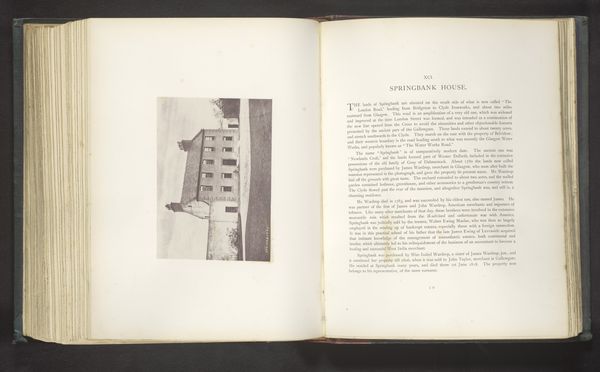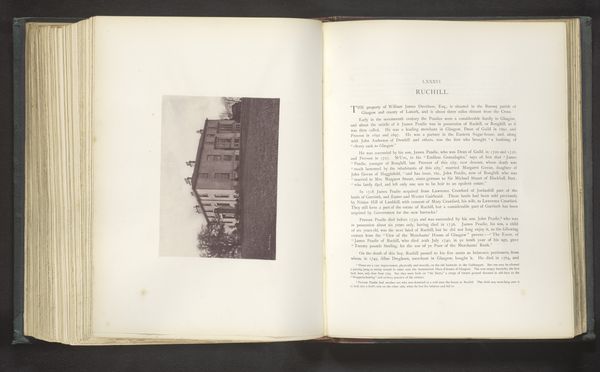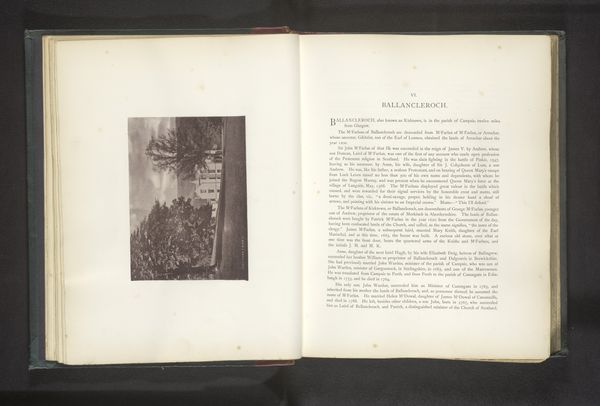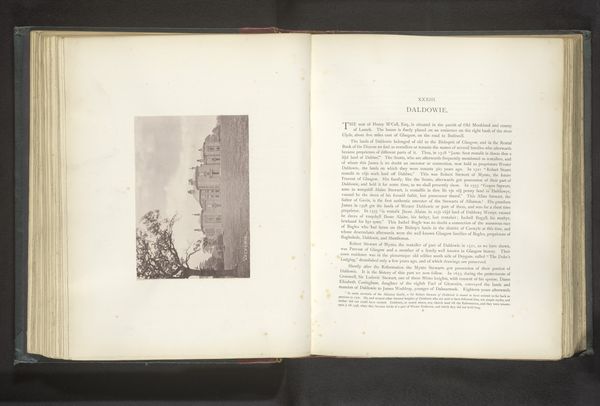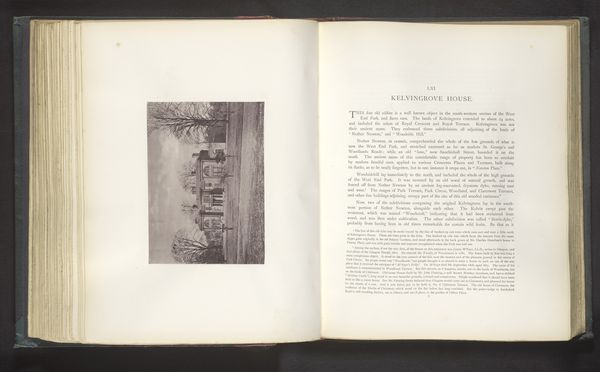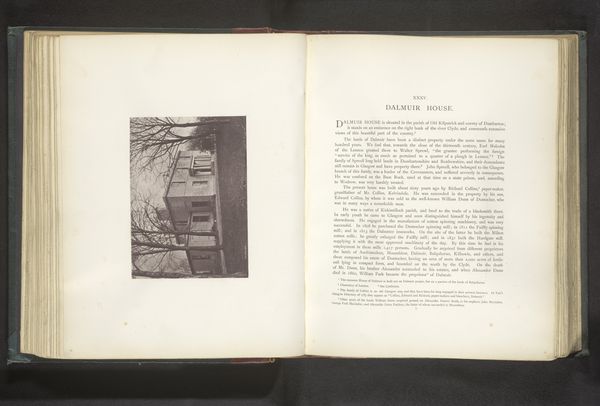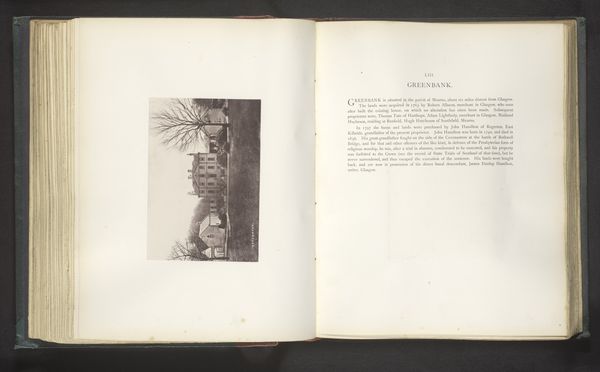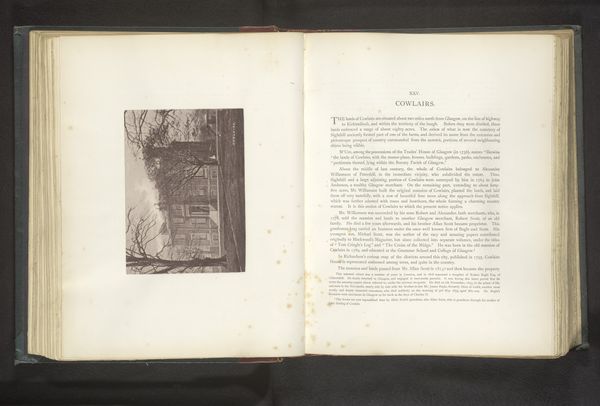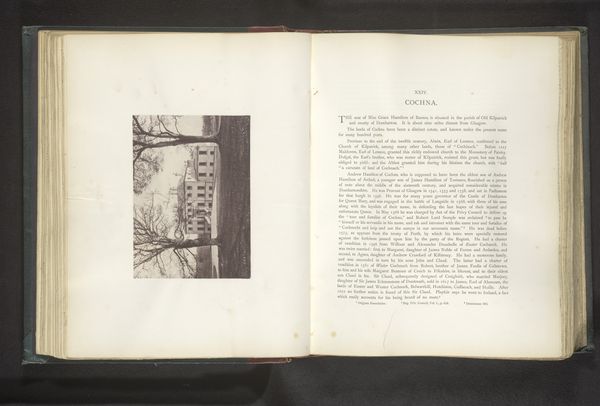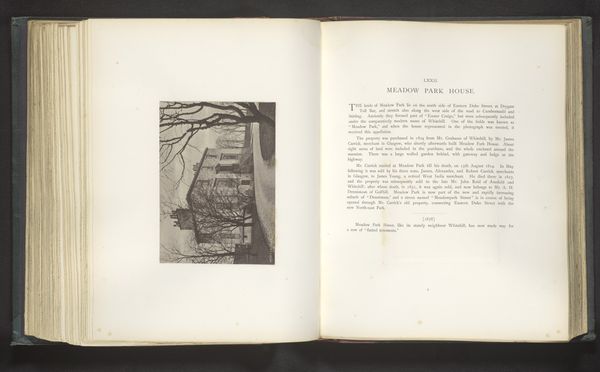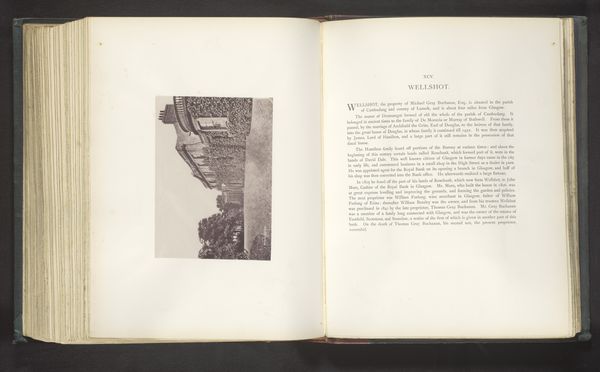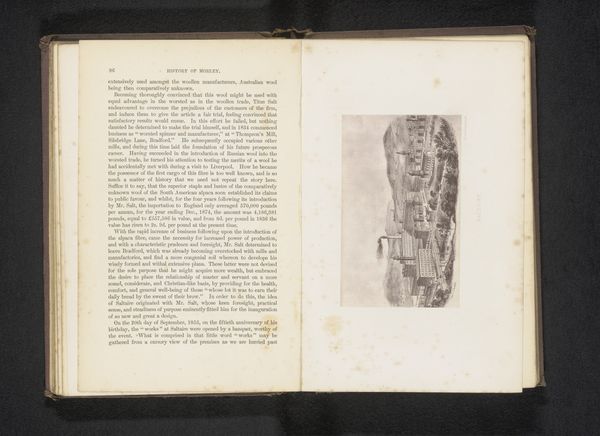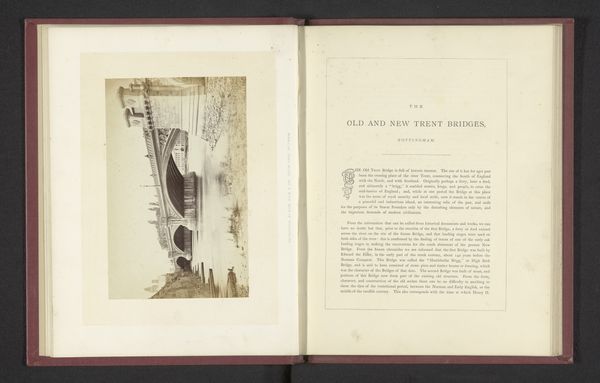
print, photography, albumen-print
# print
#
landscape
#
photography
#
albumen-print
#
building
Dimensions: height 115 mm, width 160 mm
Copyright: Rijks Museum: Open Domain
Curator: This print, known as "Bedlay," comes to us from Thomas Annan, created at some point before 1878 using the albumen print process. Looking at it, I'm immediately struck by a sense of serene solitude, a quiet grandeur that almost feels... nostalgic? Editor: Nostalgic is a good word. What I see is how it serves as a document of landed power in Scotland, a visual echo of historical privilege. You can almost feel the weight of lineage and legacy embedded within the stones of that building. Curator: I do see that, certainly, but also how the soft gradations and subtle details capture the light—the way it dances on the stone and the trees. It's like Annan wasn't just photographing a building, but imbuing it with a certain kind of quiet reverence. Editor: While I appreciate the artistry of the landscape and the way the light is captured, I think we have to acknowledge that the image is equally an assertion of dominance over land and resources. It invites us to consider whose stories are told and whose are obscured when we focus solely on aesthetic appreciation. Curator: You’re right. And yet, I’m also wondering if it suggests that history, powerful as it might be, also feels as ephemeral as that fleeting moment of light Annan managed to capture. It’s as though Annan sensed how things could shift even as they seemed so solid. Editor: Photography always carries that duality, doesn't it? A fixed image of something that is constantly changing and shifting, holding moments still when the people and circumstances surrounding it may not feel permanent at all. What’s fascinating here is Annan's visual statement itself – in its stillness. Curator: Indeed. It feels like both a commemoration and perhaps a gentle warning against the very idea of fixed, unyielding power. Editor: Right. Annan gives us more than just a landscape. It offers us a framework for understanding power dynamics through space and time. We're left contemplating how these structures persist, and the social relations that built them in the first place.
Comments
No comments
Be the first to comment and join the conversation on the ultimate creative platform.
